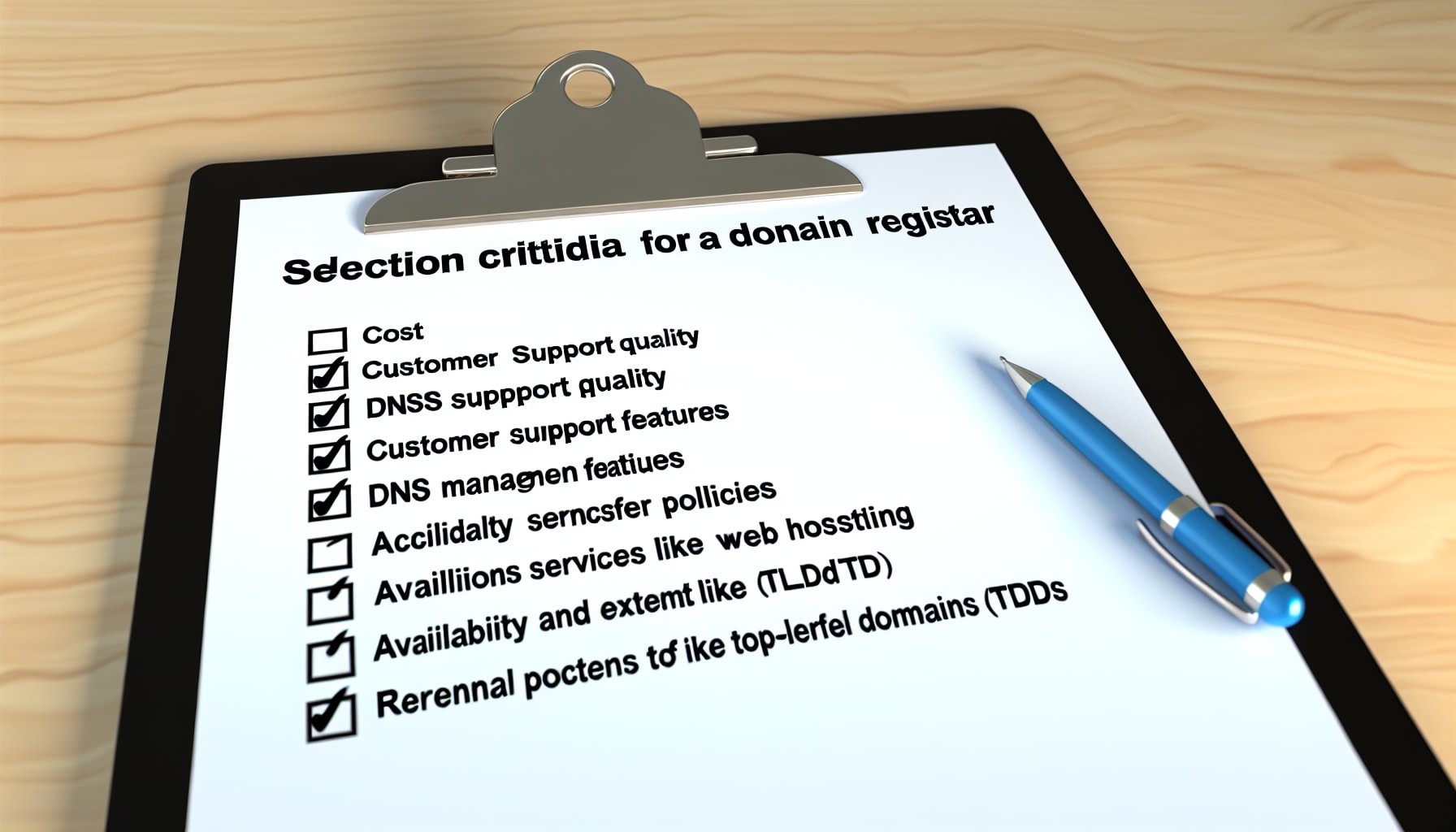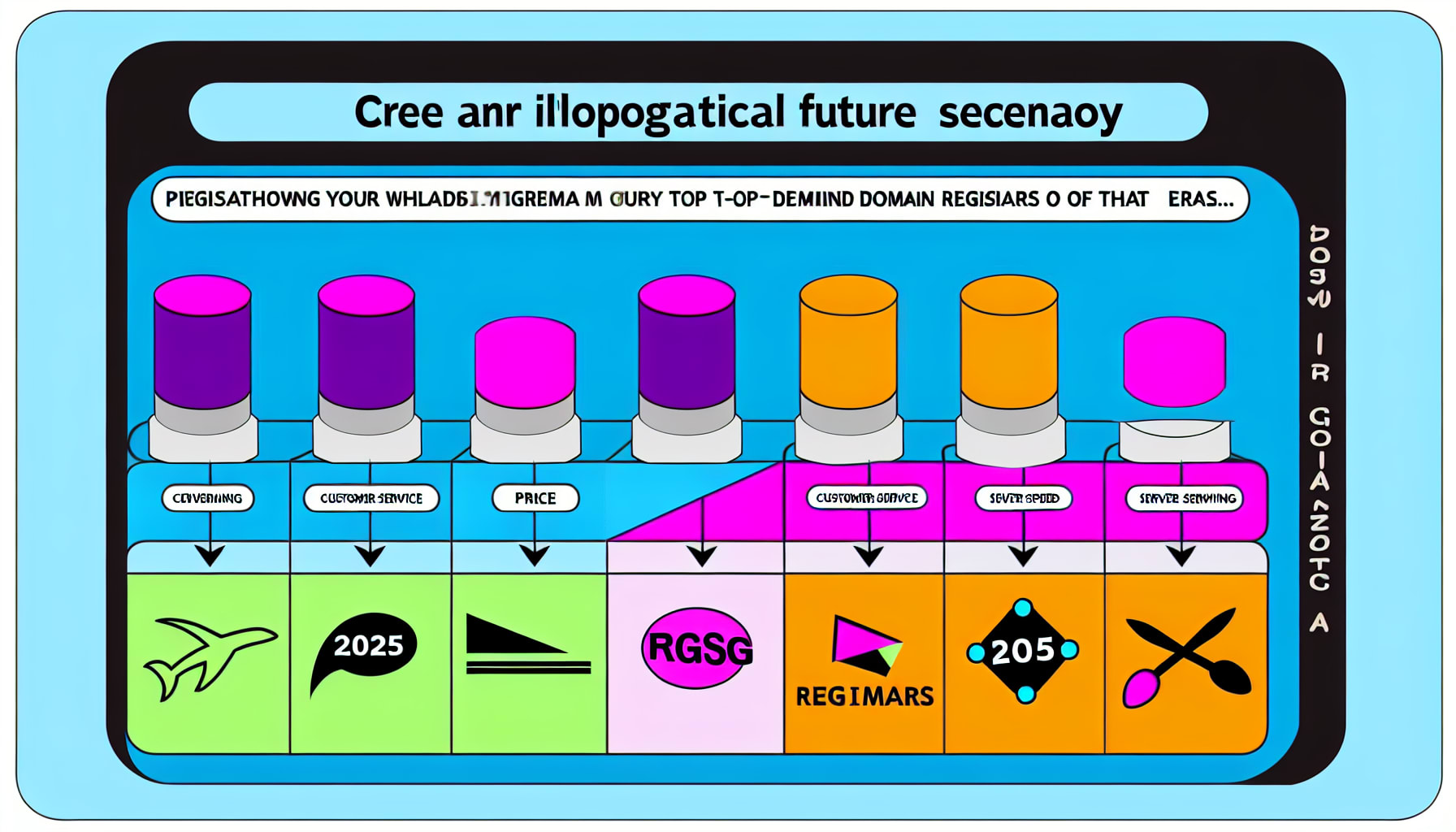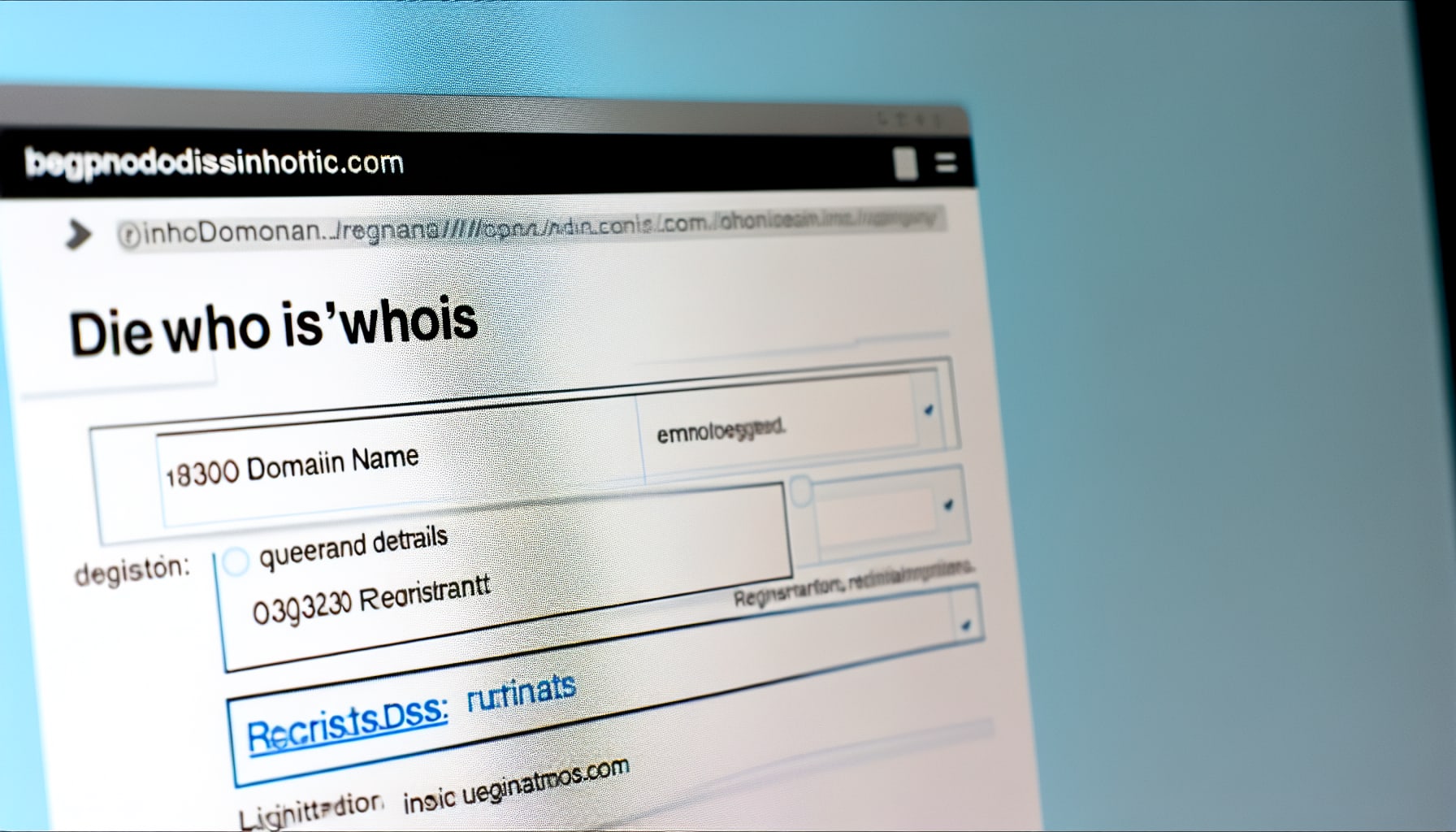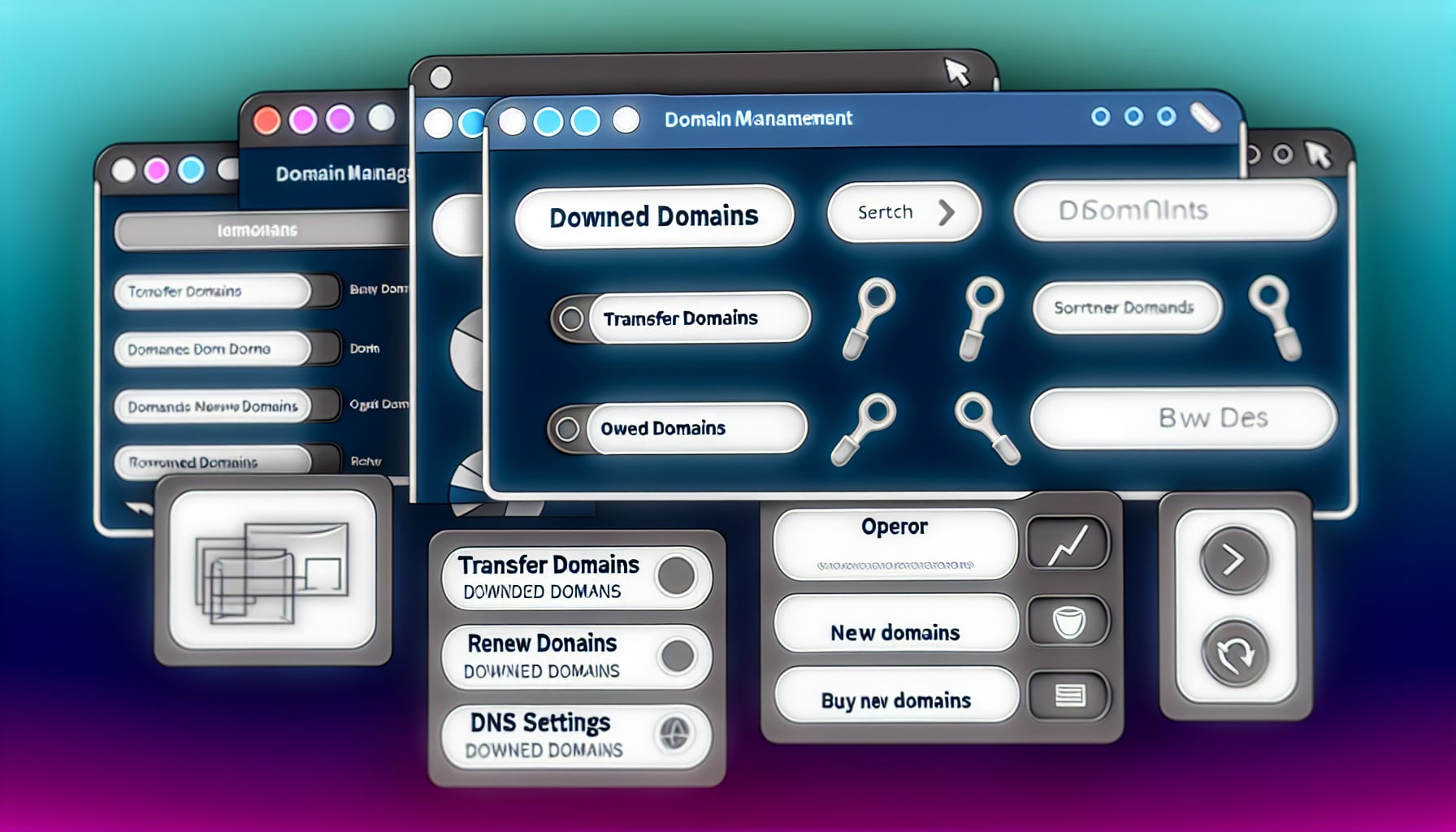Choosing a domain name is an exciting first step in building your online presence. But the next step—selecting a domain registrar—is where many people stumble. It seems simple, but picking the wrong one can lead to hidden fees, frustrating management tools, and even security risks that could jeopardize your entire brand. A domain registrar is more than just a place to buy a name; it’s the service entrusted with managing your digital address. This article will cut through the noise, breaking down the essential factors you need to consider. We’ll compare some of the top providers for 2025, so you can make a choice that protects your investment and saves you headaches down the road.
Key Factors to Consider When Choosing a Domain Registrar
Choosing a domain registrar goes far beyond simply finding the lowest price for a .com domain. The right registrar acts as a reliable partner, while the wrong one can create unexpected hurdles. To make a smart decision, you need to look at the complete picture, including their policies on renewals, transfers, and security.
A great registrar balances fair pricing, transparent policies, robust security, and valuable add-on services.

Pricing and Renewal Policies
The most common trap is the attractive introductory price. Many registrars offer a very low price for the first year, only to charge significantly more for renewals. For example, a domain might cost $1 for the first year but renew at $22 annually. Always check the renewal cost before committing. Honest pricing is a sign of a trustworthy registrar.
Domain Transfer and Locking Mechanisms
You might want to move your domain to another registrar in the future. The Internet Corporation for Assigned Names and Numbers (ICANN), the organization governing domains, mandates that you cannot transfer a new domain for the first 60 days. However, some registrars add their own transfer fees or create a deliberately complicated process to discourage you from leaving. A good registrar makes this process straightforward and free of charge.
Domain Expiration Grace Period
Life happens, and it’s possible to forget to renew your domain, even with auto-renewal enabled if your credit card on file expires. A grace period gives you a window of time after the expiration date to renew your domain without losing it or paying hefty redemption fees. Cloudflare points out the danger of registrars that try to profit from expired domains:
Some registrars actually comb through their expired domains and set exorbitant prices if they think the previous registrant or someone else is willing to pay a high price for it. This predatory practice can cost the registrant thousands of dollars.
Choosing a registrar with a reasonable grace period is a crucial safeguard for your online identity.
Add-on Services and Privacy Protection
Registrars often bundle other services like web hosting, email accounts, and SSL certificates. One of the most important add-ons is WHOIS privacy protection. When you register a domain, your personal information (name, address, email) is added to a public database called WHOIS. Privacy protection replaces your details with the registrar’s information, protecting you from spam and potential scams. Some registrars like Namecheap and Porkbun offer this for free, while others like GoDaddy charge for it.
Top Domain Registrars of 2025: A Comparison
The domain registrar market is crowded, with dozens of options vying for your business. However, a few providers consistently stand out for their unique strengths, whether it’s price, features, or security. Understanding their differences is key to finding the right fit for your specific needs.
Providers like Namecheap and Porkbun offer great value, GoDaddy dominates the market with broad services, and Cloudflare prioritizes security above all.

Namecheap’s Strengths and Weaknesses
Namecheap is a popular choice known for its competitive pricing and straightforward approach. Its biggest selling point is the inclusion of free lifetime WhoisGuard privacy protection with every domain, a feature that many competitors charge for. However, some users report that its customer support, which is primarily chat-based, can have long wait times. While its domain management panel is functional, some find it less intuitive than more modern interfaces.
Porkbun’s Unique Offerings
Porkbun has gained a loyal following for its clean user interface, transparent pricing, and excellent customer support. Like Namecheap, it includes free WHOIS privacy with most domain extensions. It supports over 500 top-level domains (TLDs), from standard .com to quirky options like .monster and .cooking. Its renewal prices are often among the most competitive in the industry, making it a strong contender for those who value simplicity and long-term affordability.
Spaceship’s Registration Experience
Beyond the established names, you might encounter newer or niche registrars like Spaceship. While it may not have the long track record of a GoDaddy or Namecheap, it’s a reminder that the market is always evolving. When evaluating a lesser-known provider, it’s crucial to apply the same rigorous standards: check their renewal fees, transfer policies, security features, and read recent user reviews before committing.
GoDaddy’s Market Position
As one of the oldest and largest registrars, GoDaddy manages over 84 million domains. Its primary strength lies in its comprehensive suite of services, including web hosting, a website builder, and professional email. It also offers 24/7 phone support, which is a significant advantage for those who prefer speaking to a person. However, its business model relies heavily on upsells, renewal rates are typically high, and essential features like WHOIS privacy and SSL certificates often come at an extra cost.
Cloudflare’s Security Focus
Cloudflare takes a fundamentally different approach. It operates as an at-cost registrar, meaning it sells domains without any markup, passing on the wholesale price directly to you. Its primary focus is security. Cloudflare offers free WHOIS privacy, robust two-factor authentication, and a registrar lock by default to protect against unauthorized transfers and hijacking. It’s an excellent choice for security-conscious users who want to integrate their domain management with Cloudflare’s broader performance and security services.
How to Identify and Verify Your Domain Registrar
Whether you’ve forgotten who you registered a domain with or inherited a website from a client, there are times you need to identify the official registrar. This process is simple and helps clarify who is responsible for your domain’s registration versus its hosting.
You can definitively identify your registrar using the public InterNIC WHOIS lookup tool, which helps distinguish it from your hosting provider or a reseller.

Using InterNIC to Look Up Registrar Information
The most reliable way to find your registrar is by using the official InterNIC WHOIS lookup service. This tool is maintained by ICANN. The process is straightforward:
- Navigate to the InterNIC WHOIS website.
- Enter your domain name and click “Submit.”
- The results will display key information about your domain, including the “Registrar” field, which lists the company’s official name and website.
As the cPanel documentation notes:
The Registrar URL line contains your registrar’s home page.
This gives you a direct link to the company you need to contact for any domain-related issues.
Identifying Hidden or Anonymous Registration Services
If you have WHOIS privacy enabled, the lookup will show the privacy service’s information instead of your personal details. However, it will still clearly list the name of the underlying registrar. The privacy service is an add-on; the registrar is the entity that holds the actual registration.
The Difference Between a Registrar and a Hosting Service
It’s a common point of confusion, but your registrar and your web host serve two different functions. The registrar is where you buy and renew your domain name (e.g., yourbrand.com). The web host is where you store your website’s files and data. While some companies like Bluehost and GoDaddy offer both services, they are technically separate. You can register your domain with one company and host your site with another.
Password and Account Recovery Tips
Your domain name is a valuable digital asset. Losing access to your registrar account can be disastrous. Always use a strong, unique password and enable two-factor authentication (2FA) if your registrar offers it. Ensure your account’s contact email is current, as this is the primary channel for password recovery and important notifications.
Analyzing User Experience and Security at Domain Registrars
The technical features and price of a registrar are important, but the day-to-day experience of managing your domain and the strength of its security are what truly define a great service. A clunky interface can make simple tasks a chore, while weak security can expose your domain to serious threats.
A superior user experience combines an intuitive dashboard with responsive support, while robust security measures like 2FA and domain locks are non-negotiable for protecting your digital asset.

User-Friendliness and Ease of Management
You’ll interact with your registrar’s dashboard to perform critical tasks like updating DNS records, setting up email forwarding, and managing renewals. A clean, well-organized interface makes these tasks simple. Some registrars are known for cluttered dashboards filled with upsells, while others, like Porkbun and the modern GoDaddy interface, are praised for their user-friendly design.
Customer Support and Service Responsiveness
When something goes wrong with your domain, you need help quickly. The quality of customer support varies widely. Some providers offer 24/7 phone support, which can be invaluable in an emergency. Others rely on live chat or email tickets, which can sometimes result in delays. Reading recent user reviews on platforms like TrustPilot can give you a good sense of a registrar’s typical response times and support quality.
Preventing Domain Hijacking with Security Measures
Domain hijacking is a serious threat where an attacker gains unauthorized control of your domain. They might redirect it to a malicious site or demand a ransom for its return.
Domain name hijacking is the practice of changing the registration information of a domain name without the original registrant’s knowledge. It is a way of fraudulently taking control of a domain name, often with the intent of selling the domain back to the victim or a competitor.
The best defense is a registrar that offers strong security features. Two-factor authentication (2FA) adds a critical layer of protection to your account login. A registrar lock prevents unauthorized transfers of your domain, and it should be enabled by default. Reputable registrars like Cloudflare make these security features a central part of their offering.
The Necessity and Implementation of Domain Privacy
As mentioned earlier, WHOIS privacy is essential. Without it, anyone can look up your name, address, and email, exposing you to spam, phishing attempts, and other unwanted contact. The implementation differs by registrar: some offer it for free as a standard feature, while others treat it as a paid add-on. Given the risks of public WHOIS data, choosing a registrar that includes free privacy protection is a smart, cost-effective move.
Conclusion
Choosing the right domain registrar is a foundational decision for your online journey. While it’s tempting to grab the cheapest offer, the true cost lies in the details: renewal fees, transfer policies, security features, and the quality of support. A low upfront price can quickly be offset by high renewal costs or the price of essential add-ons like WHOIS privacy.
The best registrar for you depends on your priorities. If you value simplicity and fair, long-term pricing, providers like Namecheap and Porkbun are excellent choices. If you need a comprehensive suite of tools and prefer phone support, GoDaddy remains a major player. For those who prioritize security above all else, Cloudflare‘s at-cost, security-first model is hard to beat.
Ultimately, your domain name is your brand’s digital cornerstone. By investing a little time to research and choose a registrar that aligns with your needs, you’re not just buying a name—you’re securing a critical asset for years to come.









